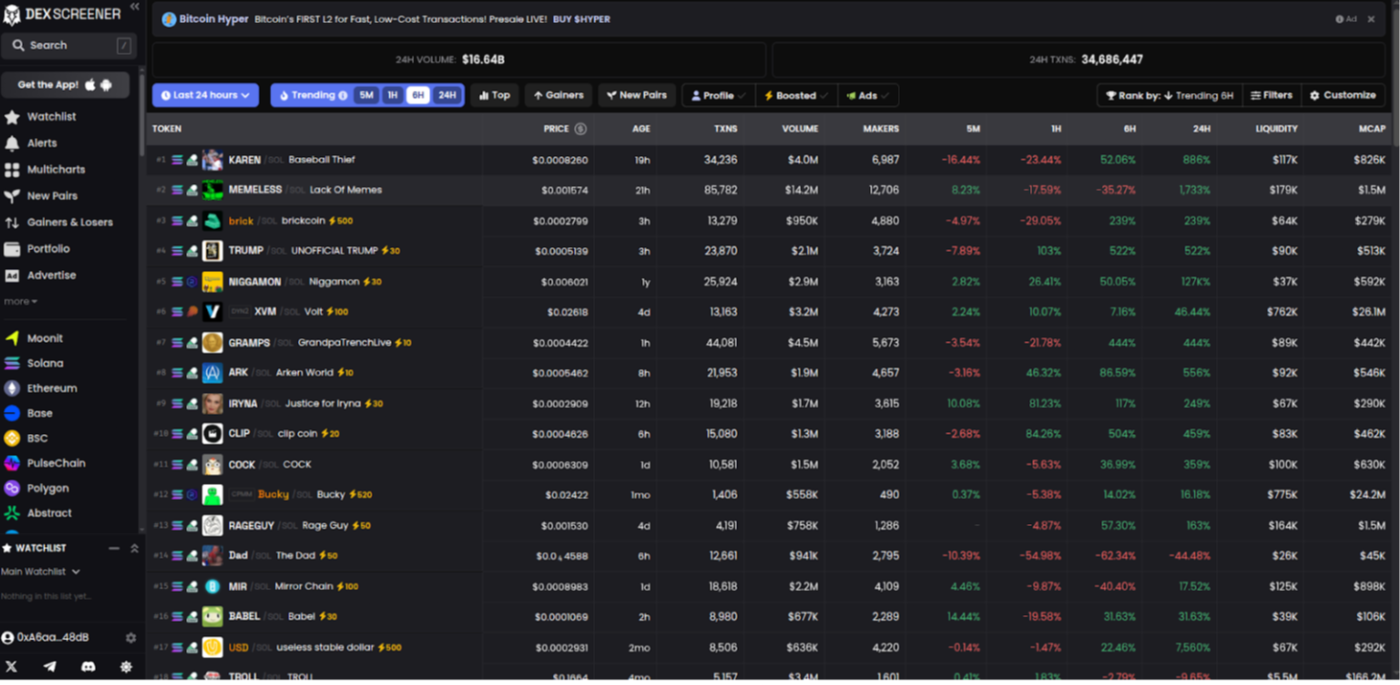Aptos Technology Compared to XRP Tundra: New Presale Offers Two Tokens at $0.068 with $2.50 Launch Target

Aptos has been presented as a blockchain engineered for speed and scalability, powered by the Move programming language and designed to process thousands of transactions per second. Its goal is to attract developers and applications that demand high throughput, with architecture built around modular upgrades. Investors watching Aptos see a network growing steadily but still in search of the user-facing features that create direct yield opportunities.
XRP Tundra enters the conversation from a different angle. Instead of focusing solely on infrastructure, it introduces a presale and staking system that channels value straight to token holders. Through dual-token allocations, Cryo Vault staking with up to 30% APY, and advanced liquidity defense, the project seeks to give XRP holders a way to earn without leaving the XRP Ledger.
Aptos’s Throughput Versus Tundra’s Yield Economy
Aptos emphasizes technology fundamentals: consensus design, Move-based smart contracts, and horizontally scalable architecture. These features target developers who need efficient settlement layers. Yet for retail holders, Aptos is primarily a bet on long-term adoption.

XRP Tundra’s strategy is more direct. Its design revolves around staking rewards and dual-token mechanics. Investors buy into the ecosystem today and secure not just speculative upside but also access to yield opportunities once staking launches. That contrast — developer-first versus holder-first — sets the two projects on distinct paths within the same industry.
Presale Mechanics: Pricing, Bonuses, and Dual Allocation
XRP Tundra’s Phase 4 presale offers TUNDRA-S, the Solana-based utility token, for $0.068. Every purchase comes with a 16% token bonus, plus a free allocation of TUNDRA-X, valued at $0.034. TUNDRA-X, launched on XRPL, functions as the reserve and governance asset.
Launch prices are set at $2.50 for TUNDRA-S and $1.25 for TUNDRA-X, creating a steep valuation gap between today’s entry and the projected market debut. The dual allocation ensures every participant holds exposure to both tokens — one designed for staking and DeFi operations, the other anchoring governance and reserves.
Cryo Vaults and Frost Keys: Turning XRP Into Productive Assets
For years, XRP holders have watched their coins sit idle. XRP Tundra introduces Cryo Vaults, where users will be able to lock XRP for periods ranging from a week to three months and earn returns that can reach 30% APY. While staking is not yet live, presale participation secures a place in the vault system at launch.
Frost Keys, NFT-based enhancers, offer additional boosts by either shortening lockups or multiplying yields. This framework turns what was once a static asset into a productive instrument, aligning XRP with the broader staking culture already common in other ecosystems.

Trust remains central in presale environments. XRP Tundra has undergone multiple third-party audits: Cyberscope, Solidproof, and Freshcoins. Each review examined the smart contracts and reward mechanisms.
In addition, Vital Block’s KYC verification confirms the development team’s identity, reducing anonymity risks. This level of disclosure stands out compared with many presales that leave participants without verifiable records.
Liquidity Defense: DAMM V2 Fee Dynamics
Volatility often undermines new token launches. To prevent this, XRP Tundra integrates Meteora’s DAMM V2 liquidity pools. Unlike traditional AMMs, DAMM V2 applies dynamic fees that start high and taper down over time. Early selling is discouraged because of prohibitive costs, while fees collected feed back into staking rewards.
The exponential fee scheduler — launching with rates as steep as 50% before gradually reducing — deters bots and market manipulators. For long-term holders, this structure creates a more stable environment and a stronger link between trading activity and staking payouts. Aptos, by contrast, relies on third-party exchanges and liquidity providers to manage its token market behavior.
Diverging Visions for Blockchain Growth
Aptos and XRP Tundra represent two very different propositions. Aptos prioritizes network efficiency and scalability, betting that developers and enterprises will drive value creation. XRP Tundra prioritizes direct returns for holders, combining dual-token allocations, Cryo Vault staking, and DAMM V2 liquidity protection.
For investors seeking early staking rights, discounted token access, and transparent verification, XRP Tundra provides a structured route from its $0.068 presale price toward a $2.50 launch target. A recent breakdown by Crypto Volt highlights how these mechanics differ from more conventional models.
As presale phases advance, the opportunity is defined not by speculative hype but by documented tokenomics, verifiable audits, and yield mechanics designed to reward long-term commitment.

Secure your Phase 4 allocation today and prepare for staking access at launch
Website: https://www.xrptundra.com/
Medium: https://medium.com/@xrptundra
Telegram: https://t.me/xrptundra
X: https://x.com/Xrptundra
Contact: Tim Fénix, contact@xrptundra.com
Vous aimerez peut-être aussi

Shocking OpenVPP Partnership Claim Draws Urgent Scrutiny

Building a DEXScreener Clone: A Step-by-Step Guide
